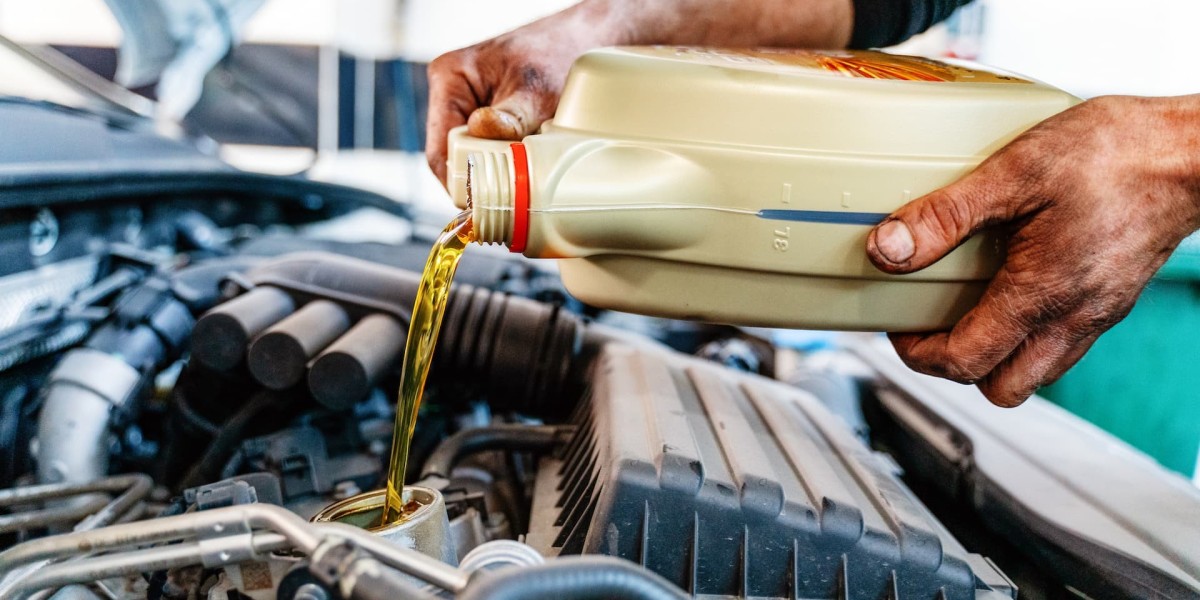Choosing the right transmission oil additive can make a big difference in how well your vehicle runs. Whether your car is old or brand new, the type of additive you use can help keep your transmission fluid clean, smooth, and long-lasting. Over time, even the best engines and transmissions start to wear down. This wear and tear causes heat, friction, and dirt to build up inside your vehicle’s transmission system. That is where transmission fluid additives come in. They help reduce damage, improve performance, and extend the life of your transmission.
In this blog, we’ll explain what oil additives for transmissions are, how they work, and why it’s important to use the right ones for old and new transmission systems. We’ll also look at the best types of additives you can use today, and how they help both modern and older vehicles stay in top shape.
What is a Transmission Oil Additive?
A transmission oil additive is a special liquid added to your transmission fluid. Its job is to improve the way the fluid works. The fluid itself acts like a lubricant that cools and protects the moving parts inside the transmission. But over time, the fluid can lose its strength, especially in extreme heat or under heavy use. When that happens, the gears inside can grind, slip, or even break.
Additives boost the power of your transmission fluid. They can make it thicker, reduce foam, stop leaks, clean out debris, and reduce heat. Most additives also help prevent corrosion and slow down the wear on metal parts. In short, they make sure the transmission fluid keeps working the way it should, for longer.
Why Use Additives in Old Transmissions?
Old vehicles have been through a lot. Their transmission systems may already be showing signs of wear, like slipping, rough shifting, or strange noises. These are warning signs that the transmission may be under strain. In such cases, using the best additive for old transmissions can help slow down or stop further damage.
Additives designed for older cars often contain seal conditioners. These ingredients make rubber seals soft again so that they can stop leaks. Some additives also have cleaning agents that remove sludge and dirt from inside the transmission. Others improve friction control, helping old gears shift more smoothly.
When the seals in old transmissions dry out, leaks happen more often. This leads to a drop in fluid levels, which can ruin the system. That’s why it’s important to use additives that are made to handle the needs of older parts and older fluid systems.
What Makes Additives Good for Modern Transmissions?
Modern cars use advanced automatic and CVT (continuously variable transmission) systems. These systems need very clean, light, and specific types of fluids to run well. The best additive for new transmissions should be designed to work with modern synthetic fluids. These additives don’t just reduce wear. They also help with energy efficiency and smoother gear changes.
New transmission systems are often more sensitive to the type of fluid and additive used. Using the wrong one can harm performance or even void your warranty. That’s why additives for new cars must meet newer standards and come with updated formulas. Some also help protect electronic sensors inside modern transmissions, keeping the system smart and responsive.
Choosing the Right Additive for Your Vehicle
The type of transmission oil additive you choose depends on your car’s age, mileage, and how you drive. If you drive in hot weather, tow heavy loads, or spend a lot of time in traffic, your transmission may need extra help. An additive can reduce heat and friction under those harsh conditions.
If your car is over ten years old or has high mileage, you should look for additives made to restore lost performance. These products often have seal protectants, cleaning agents, and friction modifiers. They are designed to help older systems last longer.
For newer vehicles, choose oil additives for transmissions that are compatible with factory-fill fluids. These are made to blend easily with today’s synthetic oils. They help keep your transmission quiet, clean, and quick to respond.
You should also read your owner’s manual before adding anything to your transmission fluid. Some manufacturers don’t recommend additives at all. Others allow them only if they meet certain standards.
How Additives Help Prevent Costly Repairs
A failed transmission is one of the most expensive repairs your car can face. Fixing or replacing a transmission can cost thousands of dollars. But with the right additive, many problems can be delayed or even avoided. Additives are a low-cost way to reduce friction, seal leaks, and keep the system cool. That’s why many drivers turn to them as part of their regular car care routine.
Regular use of transmission fluid additives can protect against damage from stop-and-go driving, overheating, and harsh shifting. Some additives also prevent oxidation. This keeps the fluid from breaking down too fast. Others stop varnish from forming, which can clog small parts in the system.
By keeping everything clean and smooth, additives help you get more life out of your transmission—and your car.
Signs You Might Need an Additive
If your transmission feels slow or rough when changing gears, consider an additive. You might also notice a burnt smell, fluid leaks, or shaking while driving. These could be early signs of trouble. Instead of waiting for things to get worse, using an additive might help restore smooth operation.
In old transmissions, you might hear clunking or whining sounds. In newer cars, there might be delays or slips when shifting gears. Both are reasons to look at using a transmission oil additive as a first step before more costly repairs.
Are Additives Safe to Use?
Yes, most quality transmission fluid additives are safe to use. But you should always buy from trusted brands. Look for products that have been tested with your type of vehicle. Using the wrong additive can do more harm than good. It’s also important not to mix additives. Stick to one product at a time, and follow the directions carefully.
Too many additives can cause the fluid to thicken too much or change how it flows. This can make the transmission overheat or lose pressure. Using the right amount, as recommended by the label, is key to getting the best results.
Final Thoughts
Using a transmission oil additive can help protect your car’s transmission from wear, leaks, and breakdowns. For older vehicles, the best additive for old transmissions can bring seals back to life, clean away buildup, and smooth out gear changes. For newer cars, the best additive for new transmissions will boost performance while keeping the system clean and efficient.
These oil additives for transmissions are a smart and low-cost way to extend your transmission’s life. They are not a fix for every problem, but they are an easy step you can take to avoid bigger issues later on. If your transmission is showing early signs of wear or if you want to prevent future trouble, the right additive can be a big help. Always choose a trusted product, follow the instructions, and keep an eye on how your transmission performs. Your car deserves the best care, old or new. And that care starts with the right transmission fluid additives.








